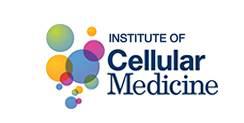- Home
- About
- Partners
- Newcastle University
- University of L'Aquila
- University of Manchester
- Alacris Teranostics GmbH
- University of Pavia
- Polygene
- Consiglio Nazionale delle Ricerche
- INSERM
- Certus Technology
- Charité Universitaet Medizin
- GATC Biotech
- University Medical Center Hamburg Eppendorf
- Evercyte GmbH
- University Hospital of Cologne
- PRIMM Srl
- University of Freiburg
- University of Antwerp
- Finovatis
- Research
- SYBIL at a glance
- Bone
- Growth plate
- Desbuquois dysplasia
- Diastrophic dysplasia
- MCDS
- Osteopetrosis
- Osteoporosis
- Osteogenesis imperfecta
- Prolidase deficiency
- PSACH and MED
- Systems biology
- SOPs
- Alcian Blue staining
- Bone measurements
- BrdU labelling
- Cell counting using ImageJ
- Chondrocyte extraction
- Cre genotyping protocol
- DMMB assay for sulphated proteoglycans
- Densitometry using ImageJ
- Double immunofluorescence
- Electron microscopy of cartilage - sample prep
- Extracting DNA for genotyping
- Grip strength measurement
- Histomorphometry on unon-decalcified bone samples
- Immunocytochemistry
- Immunofluorescence
- Immunohistochemistry
- Quantitative X-ray imaging on bones using Faxitron and ImageJ
- Skeletal preps
- TUNEL assay (Dead End Fluorimetric Kit, Promega)
- Toluidine Blue staining
- Toluidine Blue staining
- Von Kossa Gieson staining
- Wax embedding of cartilage tissue
- Contact Us
- News & Events
- Links
- Portal
Newcastle University
 Newcastle University has an excellent record of research in both rare and common human disorders. It ranks in the top 5 for both hospital- and laboratory-based clinical subjects in the UK, with two-thirds of the outputs classified as world leading or internationally excellent in the areas of ageing, chronic disease, genetics and stem cells. The university was founded in 1834 and currently offers 200 undergraduate and 260 postgraduate and research degrees. The University has 23 academic schools in 3 faculties with a total of approximately 17,000 students and 4,000 staff. In 2010 the university attracted £85.2million in research grants and contract income and was shortlisted fot the UK University of the Year.
Newcastle University has an excellent record of research in both rare and common human disorders. It ranks in the top 5 for both hospital- and laboratory-based clinical subjects in the UK, with two-thirds of the outputs classified as world leading or internationally excellent in the areas of ageing, chronic disease, genetics and stem cells. The university was founded in 1834 and currently offers 200 undergraduate and 260 postgraduate and research degrees. The University has 23 academic schools in 3 faculties with a total of approximately 17,000 students and 4,000 staff. In 2010 the university attracted £85.2million in research grants and contract income and was shortlisted fot the UK University of the Year.
Newcastle University roles in SYBIL
UNEW will act as overall coordinator of SYBIL. Scientific roles/contributions include the selection of genetic determinants (WP1) and their subsequent biochemical and biophysical analusis through cell and animal models (WP2-4) with a specific focus on cartilage structural proteins and traficking defects in bone and cartilage cells. UNEW will be involved in the generation and in-depth study of cell and mouse models with cartilage structural mutations, whilst the role of epigenetics in skeletal diseases will also be a focus. Development of a mouse growth plate ontology (WP4) and deep phenotyping of mouse models including generation of -omics profiles (WP5) and investigation of novel biomarkers (WP7). UNEW will also contribute to the development of robust in vitro systems for high-throughput drug screening and testing of potential drugs in mouse precilinical models (WP8) and to public dissemination of SYBIL research efforts (WP9).
Facilities at UNEW include a transgenic mouse facility, a diverse range of biochemical/biomedical technologies including proteomics, transcriptomics, bioinformatics and electron microscopy and extensive facilities for tissue analysis of mouse models.
Skeletal Genetics group at the Institute for Genetic Medicine
 Studies of musculoskeletal disorders are an important aspect of research in the Institute of Genetic Medicine and in the Faculty of Biomedicine at Newcastle University. Members of the Skeletal Genetics research group at the IGM are involved in several multi-institute research consortiums including the MRC-Arthritis Research UK funded Centre for Integrated Musculoskeletal Research (CIMA, cimauk.org), a collaboration between the Universities of Liverpool, Newcastle and Sheffield and the NIHR Newcastle Biomedical Research Centre in Ageing & Chronic Disease (www.ncl.ac.uk/biomedicine/research/brc). At the Institute of Genetic Medicine scientists investigate diseases which affect the formation of long bones, so called skeletal dysplasias, and the musculoskeletal complications which arise from these conditions, such as joint laxity and osteoarthritis. They are also interested in the genetic control of craniofacial and tooth development, and the diseases which arise from disruptions to these developmental pathways. Using global transcriptomic and proteomic approaches in animal models and cell culture systems, as well as next generation sequencing approaches to look for novel genetic variants and potential disease modifiers, they apply the integrative systems biology approach to understanding the cartilage disease progression and craniofacial malformations. In addition, sceintists at the IGM are the coordinators of the ESDN pan-European network of skeletal dysplasia patient referrals (www.esdn.org) and of the European SYBIL consortium, uniting 11 European universities and 7 companies and formed to further the translational medicine approaches in skeletal biology. For more information on what is going on in the Skeletal Genetics group at the IGM in Newcastle, including recent publications and current job vacancies please check their blog here
Studies of musculoskeletal disorders are an important aspect of research in the Institute of Genetic Medicine and in the Faculty of Biomedicine at Newcastle University. Members of the Skeletal Genetics research group at the IGM are involved in several multi-institute research consortiums including the MRC-Arthritis Research UK funded Centre for Integrated Musculoskeletal Research (CIMA, cimauk.org), a collaboration between the Universities of Liverpool, Newcastle and Sheffield and the NIHR Newcastle Biomedical Research Centre in Ageing & Chronic Disease (www.ncl.ac.uk/biomedicine/research/brc). At the Institute of Genetic Medicine scientists investigate diseases which affect the formation of long bones, so called skeletal dysplasias, and the musculoskeletal complications which arise from these conditions, such as joint laxity and osteoarthritis. They are also interested in the genetic control of craniofacial and tooth development, and the diseases which arise from disruptions to these developmental pathways. Using global transcriptomic and proteomic approaches in animal models and cell culture systems, as well as next generation sequencing approaches to look for novel genetic variants and potential disease modifiers, they apply the integrative systems biology approach to understanding the cartilage disease progression and craniofacial malformations. In addition, sceintists at the IGM are the coordinators of the ESDN pan-European network of skeletal dysplasia patient referrals (www.esdn.org) and of the European SYBIL consortium, uniting 11 European universities and 7 companies and formed to further the translational medicine approaches in skeletal biology. For more information on what is going on in the Skeletal Genetics group at the IGM in Newcastle, including recent publications and current job vacancies please check their blog here
IGM researchers involved in SYBIL
 Prof Michael Briggs (Head of Skeletal Genetics group) – Molecular genetics and cell-matrix pathology of genetic skeletal diseases. During endochondral bone growth, chondrocytes in the growth plate undergo a highly coordinated and tightly controlled process of proliferation, hypertrophy and finally apoptosis at the vascular invasion front. Chondrocyte proliferation and hypertrophy is vital for correct long bone growth, whilst apoptosis of terminal hypertrophic chondrocytes plays a critical role in the transition from chondrogenesis to osteogenesis. Disruptions to these processes lead to growth plate dysplasia and result in a heterogeneous group of genetic diseases known as skeletal dysplasias that are characterised predominantly by short-limb dwarfism.
Prof Michael Briggs (Head of Skeletal Genetics group) – Molecular genetics and cell-matrix pathology of genetic skeletal diseases. During endochondral bone growth, chondrocytes in the growth plate undergo a highly coordinated and tightly controlled process of proliferation, hypertrophy and finally apoptosis at the vascular invasion front. Chondrocyte proliferation and hypertrophy is vital for correct long bone growth, whilst apoptosis of terminal hypertrophic chondrocytes plays a critical role in the transition from chondrogenesis to osteogenesis. Disruptions to these processes lead to growth plate dysplasia and result in a heterogeneous group of genetic diseases known as skeletal dysplasias that are characterised predominantly by short-limb dwarfism.
 Dr Katarzyna Piróg – Cartilage biomechanics and musculoskeletal complications of chondrodysplasias. Skeletal dysplasias are diverse and complex genetic conditions primarily affecting bone and cartilage. They often result from a combination of intracellular (ER) and extracellular stress elicited by the mutant protein on the growth plate and articular chondrocytes. I’m specifically interested in the abnormalities in the extracellular matrix ultrastructure associated with chondrodysplasias. I’d like to know how the cells sense and react to such changes and how this in turn impacts on the biomechanical properties of tissues. I’m also interested in musculoskeletal complications of chondrodysplasias, such as the associated myopathy and/or tendinopathy, trying to perceive the knee joint as a system of various interconnected tissues and through this approach gain a broader understanding of musculoskeletal conditions and their complications, such as osteoarthritis.
Dr Katarzyna Piróg – Cartilage biomechanics and musculoskeletal complications of chondrodysplasias. Skeletal dysplasias are diverse and complex genetic conditions primarily affecting bone and cartilage. They often result from a combination of intracellular (ER) and extracellular stress elicited by the mutant protein on the growth plate and articular chondrocytes. I’m specifically interested in the abnormalities in the extracellular matrix ultrastructure associated with chondrodysplasias. I’d like to know how the cells sense and react to such changes and how this in turn impacts on the biomechanical properties of tissues. I’m also interested in musculoskeletal complications of chondrodysplasias, such as the associated myopathy and/or tendinopathy, trying to perceive the knee joint as a system of various interconnected tissues and through this approach gain a broader understanding of musculoskeletal conditions and their complications, such as osteoarthritis.
Musculoskeletal Research Group at the Institute for Cellular Medicine
 The main research focus at the Musculoskeletal Research Group at the ICM is the cause and management of arthritis, and of bone and joint diseases. The ICM group comprises of a mixture of biochemists, immunologists, geneticists and molecular biologists with a diverse research portfolio, from studies of the degradation of articular cartilage to the use of nanotechnology in the design of future joint prostheses and the generation of novel immunotherapies. The Musculoskeletal Research Group are a close-knit group that benefits from cross-disciplinary interactions and research programmes. The work specifically focuses on the enzymes that destroy articular cartilage in osteoarthritis (OA) and rheumatoid arthritis (RA) from the perspective of their biochemistry, gene regulation and signalling pathways, on the genetic and epigenetic basis of OA and the effects of associated risk alleles on gene activity and on protein function, the outcomes of joint replacement and methods for improving integration with host tissue. In particular, the members of the Musculoskeletal Research group at the ICM are actively seeking ways to adapt nanoscale science for the coating of prosthetic surfaces, and osteoporosis, metabolic bone disease and the epidemiology of musculoskeletal disease in the elderly. Thesicentists at the ICM are closely involved in many collaborative projects including the MRC-Arthritis Research UK funded Centre for Integrated Musculoskeletal Research (CIMA, cimauk.org), a collaboration between the Universities of Liverpool, Newcastle and Sheffield and the NIHR Newcastle Biomedical Research Centre in Ageing & Chronic Disease (www.ncl.ac.uk/biomedicine/research/brc). They also hold regular scientific meetings with the Skeletal Genetics group at the IGM.
The main research focus at the Musculoskeletal Research Group at the ICM is the cause and management of arthritis, and of bone and joint diseases. The ICM group comprises of a mixture of biochemists, immunologists, geneticists and molecular biologists with a diverse research portfolio, from studies of the degradation of articular cartilage to the use of nanotechnology in the design of future joint prostheses and the generation of novel immunotherapies. The Musculoskeletal Research Group are a close-knit group that benefits from cross-disciplinary interactions and research programmes. The work specifically focuses on the enzymes that destroy articular cartilage in osteoarthritis (OA) and rheumatoid arthritis (RA) from the perspective of their biochemistry, gene regulation and signalling pathways, on the genetic and epigenetic basis of OA and the effects of associated risk alleles on gene activity and on protein function, the outcomes of joint replacement and methods for improving integration with host tissue. In particular, the members of the Musculoskeletal Research group at the ICM are actively seeking ways to adapt nanoscale science for the coating of prosthetic surfaces, and osteoporosis, metabolic bone disease and the epidemiology of musculoskeletal disease in the elderly. Thesicentists at the ICM are closely involved in many collaborative projects including the MRC-Arthritis Research UK funded Centre for Integrated Musculoskeletal Research (CIMA, cimauk.org), a collaboration between the Universities of Liverpool, Newcastle and Sheffield and the NIHR Newcastle Biomedical Research Centre in Ageing & Chronic Disease (www.ncl.ac.uk/biomedicine/research/brc). They also hold regular scientific meetings with the Skeletal Genetics group at the IGM.
ICM researchers involved in SYBIL
 Prof Drew Rowan (Head of Musculoskeletal Research group) – I am primarily interested in the cellular and molecular mechanisms that regulate the induction of the potent matrix-degrading proteinases that are involved in pathological tissue destruction. My focus is on both the metalloprteinases and the serine proteinases since these act extracellularly to degrade extacellular matrices. My work therefore encompasses molecular events that occur both extracellulary (eg. proenzyme activation) as well as intracellularly (eg. cell signalling). The generation of a detailed understanding of such fundamental events that drive the tissue destruction prevalent in arthritis may well yield new therapeutic targets to prevent further joint damage. Current projects in my lab focus on understanding the molecular effects that mediate synergistic gene transcription of various metalloproteinases as well as identify proteinases that are involved in the activation cascades of these extracellular matrix-degrading enzymes. Other projects are assessing the impact of various signal transduction pathways that lead to the induction of metalloproteinase genes in chondrocytes.
Prof Drew Rowan (Head of Musculoskeletal Research group) – I am primarily interested in the cellular and molecular mechanisms that regulate the induction of the potent matrix-degrading proteinases that are involved in pathological tissue destruction. My focus is on both the metalloprteinases and the serine proteinases since these act extracellularly to degrade extacellular matrices. My work therefore encompasses molecular events that occur both extracellulary (eg. proenzyme activation) as well as intracellularly (eg. cell signalling). The generation of a detailed understanding of such fundamental events that drive the tissue destruction prevalent in arthritis may well yield new therapeutic targets to prevent further joint damage. Current projects in my lab focus on understanding the molecular effects that mediate synergistic gene transcription of various metalloproteinases as well as identify proteinases that are involved in the activation cascades of these extracellular matrix-degrading enzymes. Other projects are assessing the impact of various signal transduction pathways that lead to the induction of metalloproteinase genes in chondrocytes.
 Dr David Young – My research interests include the expression and regulation of metalloproteinases (MPs) and their inhibitors the TIMPs, particularly in the context of osteoarthritis (OA). My laboratory focus is how these genes are epigenetically regulated; by microRNAs, DNA methylation and chromatin modifications. We are also investigating the role of mitochondria and the role of ubiquitination in OA. Age is the major risk factor for Osteoarthritis. Little is known about the changes within cartilage with age. Cellular senescence is the phenomenon where cells lose the ability to divide. There is currently weak data showing that chondrocytes, the cells of cartilage senesce. We are testing whether chondrocytes do senesce and what the causes and consequences of this senescence are. We have pioneered siRNA technology within the collaborative group to both the key cartilage degrading MPs and the HDACs identified above and are developing methods to deliver these to intact cartilage explants. The generation of quantitative real-time RT-PCR primers and probes for the bovine collagenase, gelatinase and aggrecanase homologues will provide a useful resource for the collaborative group as a whole.
Dr David Young – My research interests include the expression and regulation of metalloproteinases (MPs) and their inhibitors the TIMPs, particularly in the context of osteoarthritis (OA). My laboratory focus is how these genes are epigenetically regulated; by microRNAs, DNA methylation and chromatin modifications. We are also investigating the role of mitochondria and the role of ubiquitination in OA. Age is the major risk factor for Osteoarthritis. Little is known about the changes within cartilage with age. Cellular senescence is the phenomenon where cells lose the ability to divide. There is currently weak data showing that chondrocytes, the cells of cartilage senesce. We are testing whether chondrocytes do senesce and what the causes and consequences of this senescence are. We have pioneered siRNA technology within the collaborative group to both the key cartilage degrading MPs and the HDACs identified above and are developing methods to deliver these to intact cartilage explants. The generation of quantitative real-time RT-PCR primers and probes for the bovine collagenase, gelatinase and aggrecanase homologues will provide a useful resource for the collaborative group as a whole.


